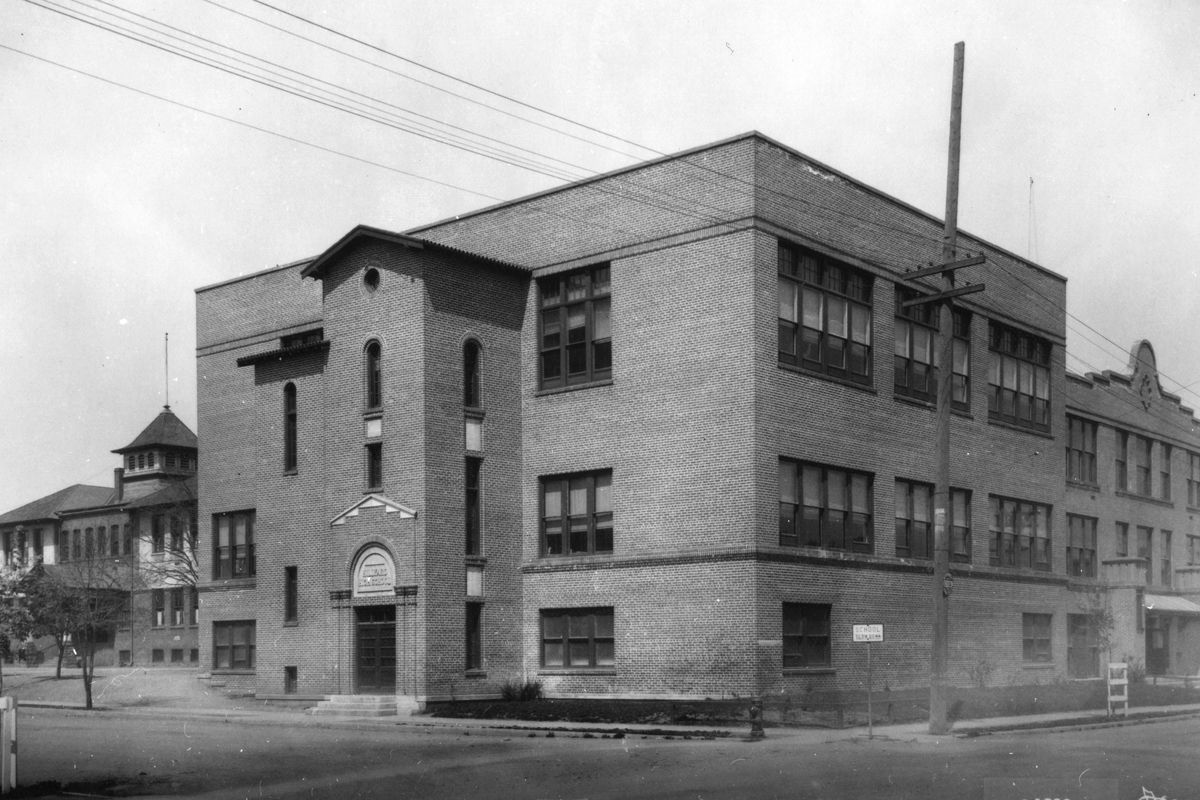Then and Now: Hillyard High School

Hillyard, the settlement of workers employed at James J. Hill’s massive train yard northeast of Spokane, experienced a population explosion at the turn of the 20th century.
Hill’s yard, which gave the settlement its name, had shops to repair locomotives and cars, refuel trains, store freight and house train crews. Eventually, new locomotives would be manufactured and there would be a massive roundhouse where 20 of them could be parked for repairs.
Hill, operator of the Great Northern Railway, hated paying taxes and never wanted the little town to incorporate.
But citizens formed the tiny Hillyard School District and raised $50,000 for a three-story building at Regal Street and Everett Avenue in 1907. The school started with 14 students, one teacher and a principal. By 1911, there were more than 100 students, so the district added an annex facing Regal in 1912. Still, there was no gymnasium or auditorium, so they used the YMCA for basketball and the Methodist church for plays and graduations.
The growth trend continued and another addition, with a gymnasium/auditorium, was built in 1922. Locals nicknamed the three buildings “Hillyard University.”
In 1924, Hillyard was annexed into the city and the schools joined the Spokane school district. New students from nearby neighborhoods caused another growth spurt for the high school. With the backing of the larger Spokane district, John R. Rogers High School was built at Wellesley Avenue and Pittsburg Street for $500,000. The last Hillyard High School class graduated in 1931.
The buildings, empty through the 1930s, were used for housing during World War II and turned into apartments after the war. The 1907 building is now gone. The remaining buildings were sold to private owners in 1959. Over several decades, the Martindale Apartments became known for drug deals and crime, and the building was forced to close when landlords failed to pay utilities.
Spokane Community Housing Association bought the property in 2005. A renovation from 2010 to 2012 transformed the building into 51 low-income units. It was renamed Agnes Kehoe Place after the Hillyard pioneer and state legislator who argued against demolishing the buildings in the 1930s.
– Jesse Tinsley